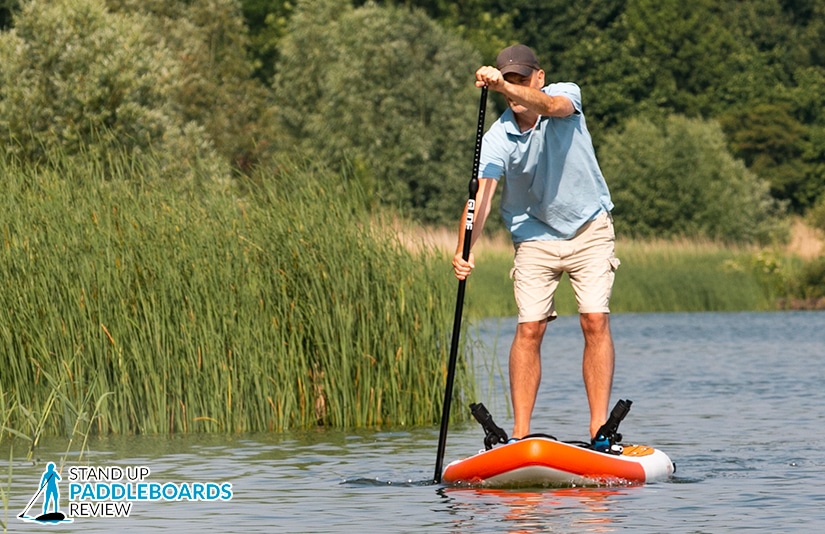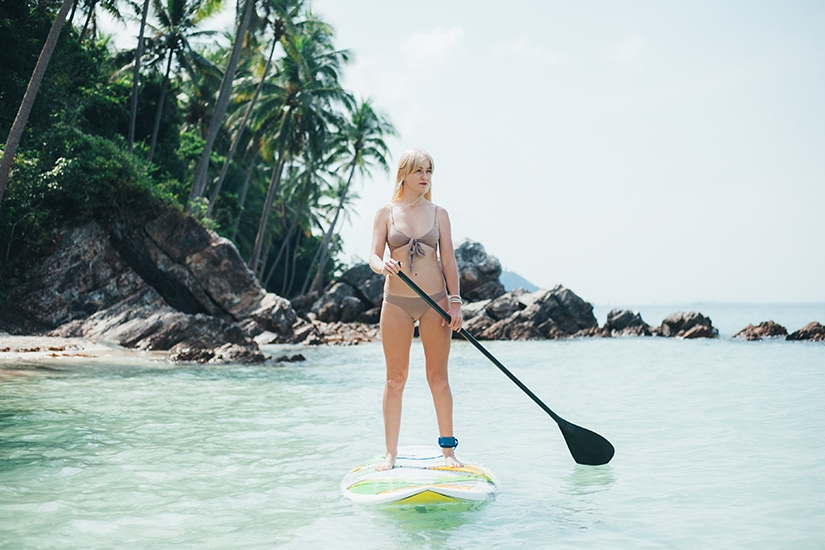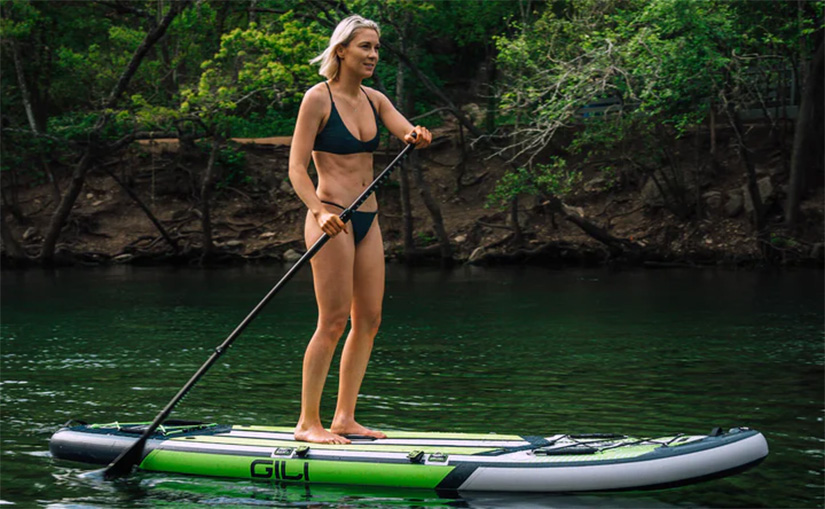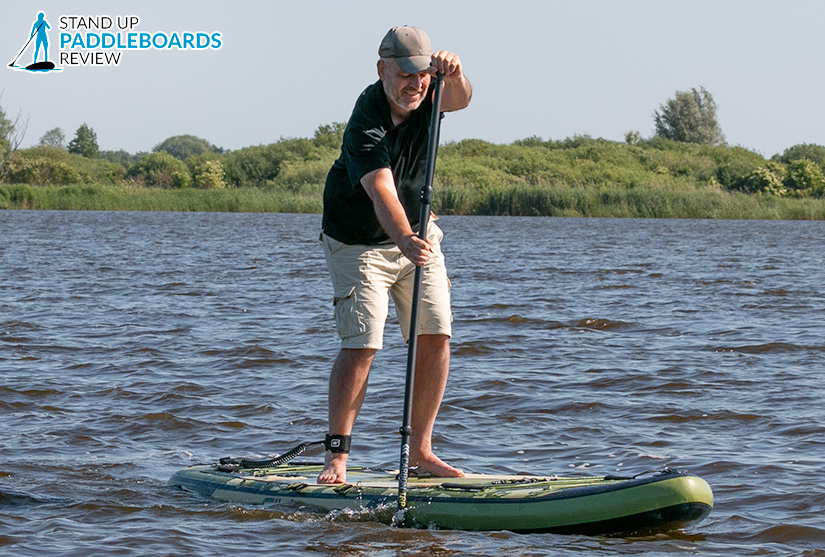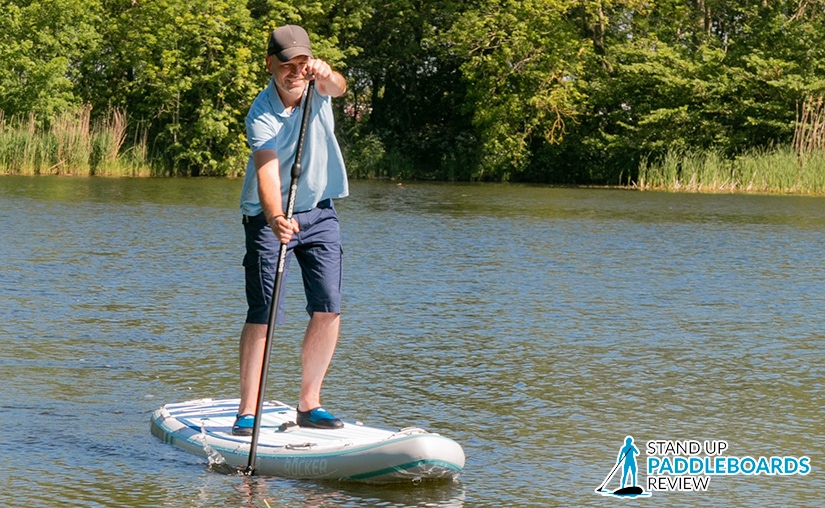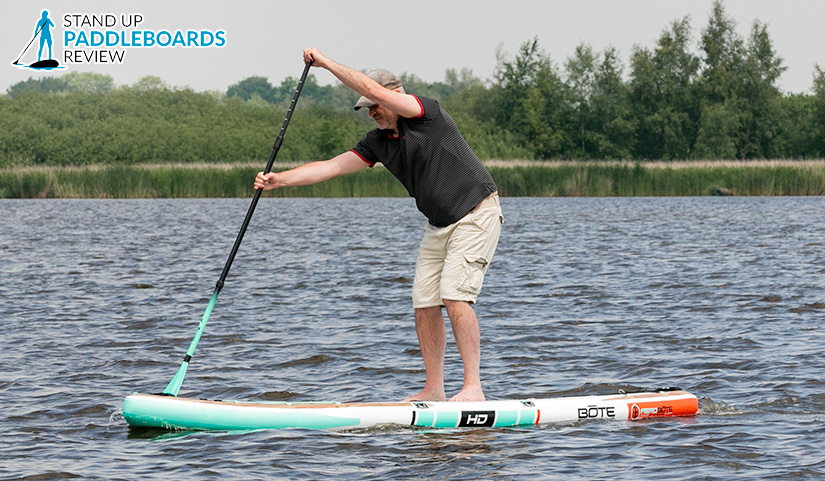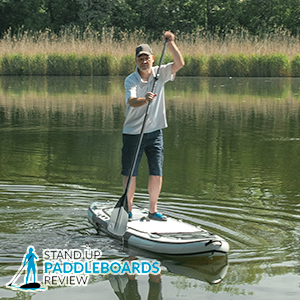I get this question a lot: as a SUP beginner, how do I paddle in a straight line, instead of zigzagging all over the water?
So if you are having a little trouble, you’re not alone. Steering a paddle board can be trickier than it seems. Being unable to make your SUP go straight is frustrating. You have to keep switching sides more often than you need to—which is tiring.
The ability to paddle straight makes it easy to cover more distance while wearing yourself out less.
Luckily, it is not hard to learn. Here are some important tips and techniques to help you out.
Key Takeaways
- Use a paddle that is the right length for you and get a board that is the right size for your height and weight.
- Keep your paddle shaft vertical and have the paddle blade close to your board.
- Reach far forward while making a paddle stroke and end at your feet by slicing the blade out of the water.
- Fix your eyes on a landmark ahead of you or the horizon and you will have your paddle board going straight.
- Remember to switch paddling sides every once in a while.
Before You Get Started…
1. Check Your Paddle Length
If your paddle is too long or too short, you won’t be able to paddleboard properly. You will find yourself straining and you’ll not have a good experience.
Add 4 to 7 inches to your height. That would be the right paddle length for you. Ideally, you will want to get an adjustable paddle. You can play around with different paddle lengths and see what works best.
If possible, use a carbon paddle.
Carbon paddles are lightweight and the most efficient when making paddle strokes.
2. Have the Right Paddle Board
Some paddle boards track straighter than others. This usually has a lot to do with their size, especially length, and design.
Longer boards are easier to paddle in a straight line. That’s why most racing and touring SUPs are long.
But you don’t need a paddleboard that is 17 feet long. Average size paddle boards (10’ to 11’6 in length and 30 to 33” in width) are perfect for recreational paddle boarding.
You just have to get a board that is the right size for your height and weight as well as your favorite SUP activity.
3. Stand Properly
Don’t put too much weight on one side of your paddle board if you want it to track well. Make sure you stand at the center, with your feet shoulder-width apart.
Your SUP should be sitting flat on the water, not leaning to the left or right.
Possible Reasons Why Your SUP Board Is Not Going Straight
Why is your paddle board veering off course regardless of how hard you try? You could be doing one or all of the following.
a. You Paddle at an Angle
Most beginners paddle like this (check image above), with their paddle at an angle. As you can see, the paddle blade is far from the SUP and the paddler’s upper hand is above the paddle board.
There are two mistakes here: the paddler’s hand placement and the angle of the paddle.
When you paddle like this, you end up pushing the tail of your board in the opposite direction. This causes it to turn and go off course.
b. You Pull the Paddle Blade Past Your Feet
There is no need for your paddle stroke to go past your feet if your aim is paddling straight.
This will have the same effect as the first mistake above. It will make your tail shift to one side and your SUP board will turn as a result.
c. You Grip Your Paddle Too Tightly
When you are a beginner, you may feel like you need to hold the paddle shaft tightly. You don’t want it to slip through your hands and fall into the water.
With such a tight grip, you’ll not be as flexible as you should be. It will be hard to make a smooth and efficient forward stroke.
d. You Paddle Only with Your Arms
This may sound confusing because how else are you supposed to paddle?
The thing is, using only your arms to pull back the paddle will wear you out very early on in your session.
If you observe carefully, pro paddlers rotate their torso and do a slight side crunch when reaching forward. This is the correct paddle technique. It allows you to power the stroke using the core muscles.
How to Paddle in a Straight Line
So how do you correct the above mistakes and make your SUP go straight?
1. Stack Your Hands and Keep Your Paddle Vertical
The first mistake we’ve discussed is holding your paddle at an angle. The upper hand is above the SUP and the blade far from the rail.
To correct that, you need to keep the paddle shaft vertical. Have the paddle blade close to your board.
Stack one hand directly on top of the other.
Are you feeling a little confused? Here is an example to help you understand.
In the picture below, I am paddling on my right side. Notice how my upper hand is above the water and not above the paddle board. My left arm is across the board and the blade is very close to my SUP’s rail.
When I am taking forward strokes, my paddle blade will push back water in a straight line. It won’t make a curved stroke causing the paddle board to turn.
See how my left arm is across the board and the blade is right next to the rail?
2. Focus on the Horizon
This one takes a little bit of practice. As a newbie, you will be inclined to focus on your position on the paddleboard. You’ll want to see how you are making the strokes and whether you’re doing it right.
As a result, you end up zigzagging and going off course. You may not even realize it.
Fix your eyes on a landmark ahead of you or the horizon and you will have your paddle board going straight.
3. Reach Far Forward Toward the Nose
Take long strokes by reaching as far toward the nose as you can.
Bend your knees slightly, twist your torso, and keep your arms straight. This technique will give you the most power for your strokes. You won’t just be using your arms, but your core muscles as well, which is what you want.
Plant the paddle blade fully in the water as shown in the picture above. Once the blade reaches your feet, end the stroke.
4. Switch Sides
You have to switch paddling sides for your board to go straight.
However, it can be tiring when you have to do it after every few strokes. You lose your momentum and speed each time you switch.
If you follow the proper paddling techniques, you won’t have to do it often. Pay attention to the number of strokes you paddle before you have to switch sides.
You may notice that you paddle more strokes on one side (usually your dominant side) than on the other.
Even though you can paddle straight for a while without switching, it is still advisable that you do it. If you don’t, you may overuse one shoulder and maybe strain it.
You can also try the cross-forward stroke. It involves paddling a few strokes on the opposite side without changing hand positions on the paddle.
Using my photo above as an example, I am paddling on my right side. If I want to keep the SUP board going straight, I can turn and paddle two or three strokes on my left side. I will not change my hand positions—the left hand will still be at the top.
This stroke is not powerful but it helps you maintain course without necessarily switching paddling sides. It is also a great workout for your shoulders.
5. Be Patient
It takes time and practice. Don’t get frustrated when you can’t seem to do something right.
Focus on making progress, not perfection. You will soon be paddling straight like a pro.
Final Thoughts
Learning how to paddle board straight doesn’t have to be hard. Make sure your paddle and paddle board are the right size for you. Next, practice standing properly on the SUP.
From there, start using the above techniques to correct common paddling mistakes.
Lastly, have fun and take it one step at a time. You will get it.
Happy paddling!

